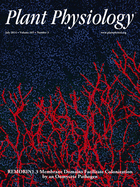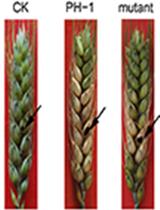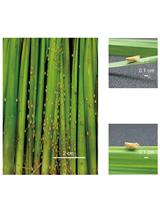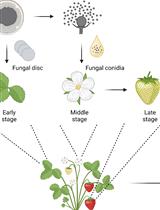- EN - English
- CN - 中文
Luminol-based Assay for Detection of Immunity Elicitor-induced Hydrogen Peroxide Production in Arabidopsis thaliana Leaves
鲁米诺反应检测拟南芥叶片中免疫激发产生的过氧化氢
发布: 2015年12月20日第5卷第24期 DOI: 10.21769/BioProtoc.1685 浏览次数: 21880
评审: Michael EnosZhaohui LiuAnonymous reviewer(s)
Abstract
In Arabidopsis thaliana, one of the very early immune-related responses induced after elicitor perception is the oxidative burst, i.e., reactive oxygen species (ROS) generation including superoxide anion and hydrogen peroxide (H2O2). ROS production plays different roles in a wide range of biotic and abiotic stress responses, including the closure of stomata and the regulation of cell expansion. In particular, elicitor-induced H2O2 is produced mainly by the membrane localized NAD(P)H oxidases RESPIRATORY BURST OXIDASE HOMOLOGUE D and F. In this protocol, we describe a simple and reproducible luminol/peroxidase-based assay to detect and evaluate immunity-related accumulation of H2O2 produced in Arabidopsis leaf discs treated with immunity elicitors, such as oligogalacturonides (OGs), flagellin (flg22) or the elongation factor-thermo-unstable (EF-Tu - elf18). This method is based on the detection of the luminescence released by excited-luminol molecules generated after the horseradish peroxidase (HRP)-catalyzed oxidation of luminol molecules in the presence of H2O2. Levels as well as duration of the luminescence are proportional to the amount of H2O2 produced by elicited leaf discs.
Materials and Reagents
- Petri plates (90 x 15 mm)
- 96-well luminometer plate (Thermo Fisher Scientific, catalog number: 136101 )
- Aluminum foil
- At least two Arabidopsis thaliana (e.g., ecotype Columbia-0) plants for each elicitor treatment
- Luminol (Sigma-Aldrich, catalog number: 123072 )
- Peroxidase from horseradish (Sigma-Aldrich, catalog number: P8125 )
- Sterile distilled water
- Dimethyl sulfoxide (DMSO) (Sigma-Aldrich, catalog number: 41640 )
- Flg22 (QRLSTGSRINSAKDDAAGLQIA) and elf18 (ac-SKEKFERTKPHVNVGTIG)-EZBiolab (http://www.ezbiolab.com/)
- OGs with an average degree of polymerization of 10 to 16 prepared as previously described (Bellincampi et al., 2000)
- 500x luminol stock solution (LSS) (see Recipes)
- 500x horseradish peroxidase stock solution (HPSS) (see Recipes)
- 1 mM flg22 stock solution (see Recipes)
- 1 mM elf18 stock solution (see Recipes)
Equipment
- Arabidopsis growth chamber
- Surgical blade
- Cork borer set (0.125 cm2 area) (Sigma-Aldrich, catalog number: Z165220 )
- Plastic bur block
- Flat tweezer
- GloMax®-Multi+ Detection System with dual injectors (Promega Corporation)
- Microsart® e.jet laboratory vacuum pump (Sartorius AG, catalog number: 16612 )
- Plastic or glass desiccator
Procedure
文章信息
版权信息
© 2015 The Authors; exclusive licensee Bio-protocol LLC.
如何引用
Readers should cite both the Bio-protocol article and the original research article where this protocol was used:
- Bisceglia, N. G., Gravino, M. and Savatin, D. V. (2015). Luminol-based Assay for Detection of Immunity Elicitor-induced Hydrogen Peroxide Production in Arabidopsis thaliana Leaves. Bio-protocol 5(24): e1685. DOI: 10.21769/BioProtoc.1685.
- Bellincampi, D., Dipierro, N., Salvi, G., Cervone, F. and De Lorenzo, G. (2000). Extracellular H(2)O(2) induced by oligogalacturonides is not involved in the inhibition of the auxin-regulated rolB gene expression in tobacco leaf explants. Plant Physiol 122(4): 1379-1385.
分类
植物科学 > 植物免疫 > 病害生物测定
您对这篇实验方法有问题吗?
在此处发布您的问题,我们将邀请本文作者来回答。同时,我们会将您的问题发布到Bio-protocol Exchange,以便寻求社区成员的帮助。
Share
Bluesky
X
Copy link













